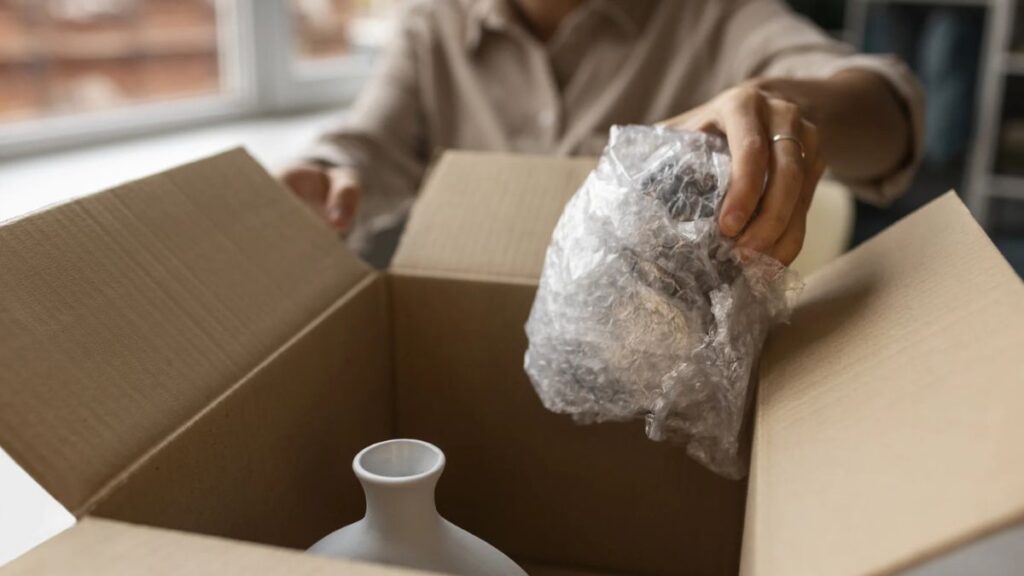Packing Materials and Tools
Proper packing starts with quality materials and having the right tools within reach. Boxes in various sizes, specialty dish packs, bubble wrap, foam sheets, sturdy packing tape, and furniture pads are standard essentials. Many professional movers recommend investing in packing paper, stretch wrap for furniture, and corner protectors for artwork and mirrors. Additionally, anti-static packing materials help protect delicate circuits during transportation for electronics and appliances. Moving experts like Checkmate Moving recommend using the original packaging wherever possible because it is designed for a secure fit and excellent padding if you’re searching for reliable moving services.
Ensure box cutters, permanent markers, and moving blankets are readily available throughout packing. Keeping these supplies organized eliminates delays and supports a safer packing routine. For unusually large or awkwardly shaped items, consider having measuring tape and straps or ropes to efficiently prepare them for moving and prevent shifting in transit.
Strategies for Fragile Items
Sensitive items like glassware, porcelain, and electronics require a careful, layered approach. Wrap each item individually in packing paper or bubble wrap; never allow glass or ceramic surfaces to touch. Fill voids within boxes with crumpled paper or foam peanuts to avoid movement and pressure points. Marking these boxes as “fragile” on multiple sides ensures extra care from anyone handling them.
For electronics and framed artwork, use rigid cardboard or foam boards as additional layers of protection. Wrap cables separately and keep accessories together to simplify setup at your destination. Temperature and moisture can affect certain sensitive goods, so use silica gel packets or waterproof coverings when appropriate. Custom crating may provide the ultimate protection if you have collectibles or high-value antiques.
Expert Approaches to Bulky and Heavy Goods
Packing and moving heavy or oversized items such as furniture, gym equipment, or large musical instruments call for extra preparation. Disassembling items where possible reduces weight and the risk of breakage or injury. Keep screws, bolts, and hardware in labeled bags taped to the item or placed in a designated hardware kit. Cover all surfaces with moving blankets or furniture pads secured with stretch wrap to avoid scuffs and scratches. Using sliders or dollies minimizes strain and damage to floors and walls when maneuvering bulky belongings.
Lifting straps or team lifts are often necessary for the heaviest items. Always plan your pathway and clear obstacles before moving large goods. Secure furniture in the moving truck using straps to stop shifting during transport and avoid over-stacking, which can lead to crushing or instability.
Labeling, Organization, and Handling Recommendations
Meticulous labeling and organization are critical for protecting both fragile and heavy items. Every box should clearly state its contents and the room it’s intended for, with additional warnings for delicate valuables. Use brightly colored tape or large labels marked “fragile” and “this side up” to help movers spot boxes requiring special attention. Create an inventory list to track placement and condition during the move, especially for high-value or sentimental items. Photography can provide documentation for insurance and ensure you remember how electronics or furniture pieces reassemble.
Packing Mistakes to Avoid
Cramming boxes, neglecting to pad empty spaces, or failing to reinforce box bottoms can lead to damage or collapse, particularly for breakables and heavy goods alike. Overfilling to save on boxes may seem practical, but it risks your possessions and those doing the heavy lifting. Avoid taping directly onto furniture finishes or delicate glass. Cutting corners with low-quality tape or worn-out boxes may result in avoidable breakage. Never attempt to move, especially bulky items, without proper equipment or a strong partner.
Keeping tabs on these common errors helps ensure your precious and substantial items arrive at their destination safely and intact. Take your time and double-check each box and furniture piece before sealing and transporting.
Resources and Final Tips for Safer Packing
Packing successfully depends on preparation, practical know-how, and the right resources. Consulting moving guides, such as those on MyMove or Consumer Reports, offer step-by-step breakdowns and tips that simplify even complex moves. Supporting your efforts with quality tools, clearly marked labels, and professional help can transform a daunting process into a smooth, stress-free experience. Safe handling, meticulous labeling, and plenty of padding are the cornerstones of expert packing for fragile and bulky items. Planning carefully and following the techniques outlined here gives your belongings the best chance of arriving safely, ready to settle into your next chapter.






